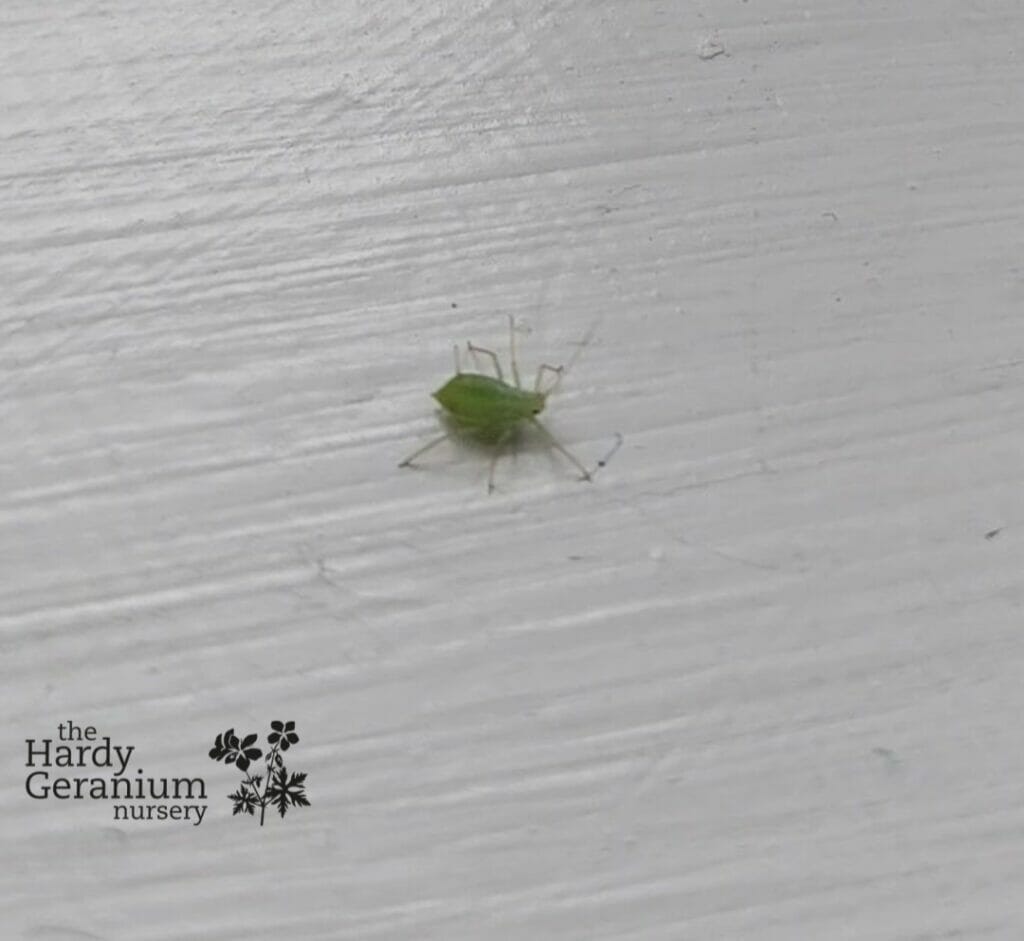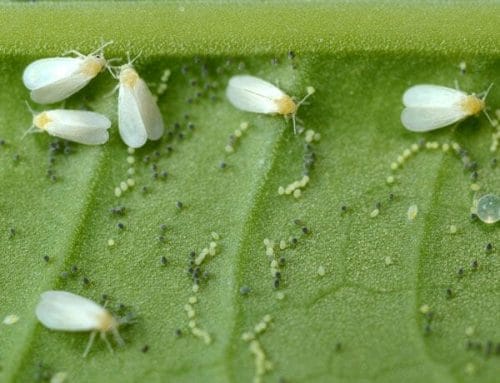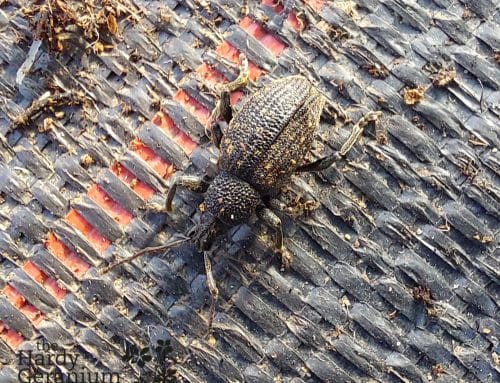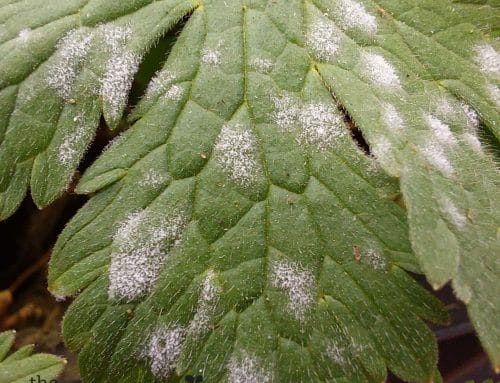For the most part aphids, more commonly known as green fly or black fly, don’t really affect Geraniums. However, never say never. Last year, conditions seemed to be perfect for the nursery to experience a siege from these mini monsters. Luckily, this glut of aphids came with its perfect partner, the Ladybird and better still Ladybird larvae. Ladybirds love to munch on aphids and their offspring are insatiable, soon the siege was over, and the ladybirds were victorious. Hurrah!
Why are aphids a problem?
As I mentioned before generally aphids aren’t a problem, certainly where geraniums are concerned anyway. The aphids can cause problems for plants in several ways. Both are to do with how they feed. Aphids are known as sap suckers; they pierce the stem or the leaf and suck out the plants sap. Primarily by doing this they are naturally going to reduce the plants vigour and growth can become distorted. A bit like when we lose a lot of blood, we don’t feel great and it takes a while to recover. Now, some varieties of aphids, such as the Peach Potato Aphid, are known as virus vectors, this means that they can spread virus between particular plants through their sap sucking action. Virus’s seldom kill the plant, but they will damage it and are incurable.
If you have a bad infestation of aphids, you might notice ants scuttling up and down your plants before you notice the aphids. Aphids secrete a sticky honeydew that ants effectively farm and take back to their nests. The ants won’t cause your plants any harm by doing this, but they are not discouraging the aphid invasion. The real problem with the honeydew that the aphids produce is that, if ants aren’t taking it away, sooty moulds will grow on it. Sooty moulds will prevent the plant from photosynthesising and thus reduce the plants vigour.
Controls
There isn’t really a lot you can do to prevent aphids entering your garden or green house but there are things you can do to keep numbers down and prevent them doing too much damage. Personally, with all pesty problems I prefer to try the biological and physical controls, resorting to chemical controls as an absolute last resort.
Biological controls
As I mentioned above, the aphid infestation I experienced last spring was largely controlled by the wonderful influx of ladybirds that also came to the nursery. However, if you have an infestation in your greenhouse you can but don’t have any ladybirds, you can buy beneficial insects such as ladybirds or parasitic wasps online. Just remember to close your greenhouse door and vents otherwise they’ll fly away!
Physical Controls
Providing your plants aren’t too fragile a good jet of water from the hose will usually dislodge them. Alternatively, I find running your thumb and forefinger along the stem, squashing them is very effective although a bit gross!
Chemical Controls
You will find many chemical controls for aphids on the shelves in garden centres and supermarkets. However, if your plants are in flower you must not spray them as there is a significant risk to pollinating insects. Remember chemical controls do not discriminate and will affect all creatures sprayed, large or small.
If you must use a chemical control you will need to consider the mode of action. Aphids breathe through spiracles, some chemical controls such as fatty acids, will work by blocking the spiracles and effectively suffocating the aphid. Some are known as systemic; this means the plant will absorb the active ingredient and while sap sucking the aphid will ingest it and die. Should you choose a chemical control please ensure you read the manufacturer’s instructions fully and follow them closely.

Green fly
- Further reading
- Aphids RHS



